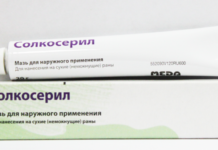Among the many cosmetics, it is so difficult to choose something really worthwhile. The popular and widely publicized is far from always effective. And trying products no name firms is always dangerous. There is an exit! Try to make a fashionable Black Mask at home from proven and completely safe ingredients. Activated carbon face mask is in no way inferior to its more expensive colleague. It is quick to prepare, easy to apply and really solves the problem of black dots. Do not believe? Spend half an hour and check.
Material Content:
- 1 Why are activated carbon masks useful?
- 2 Preparation of skin for mask application
- 3 Activated Carbon Cosmetic Mask Recipes
- 3.1 Activated Carbon with Gelatin
- 3.2 Activated carbon with PVA glue
- 3.3 Activated Carbon and Aloe
- 3.4 Activated Carbon with Honey
- 3.5 Activated Carbon and Aspirin
- 3.6 Activated Carbon and Black Clay
- 3.7 Blue clay with charcoal for oily skin
- 3.8 Charcoal anti-aging recipe
- 3.9 Activated charcoal against inflammation
- 3.10 Activated Carbon with Lemon
- 3.11 Acne Activated Carbon
- 3.12 Activated Carbon with Egg
Why are activated carbon masks useful?
You can talk about the benefits of such masks for a long time, but their whole secret lies in the properties of the main ingredient. Activated carbon is a completely harmless, but at the same time extremely effective product. It does not cause allergies, has no contraindications for external use, and, importantly, is certified as a medication. And control over the quality of drugs is significantly higher than in any other category of goods.
More materials: activated carbon and gelatin mask
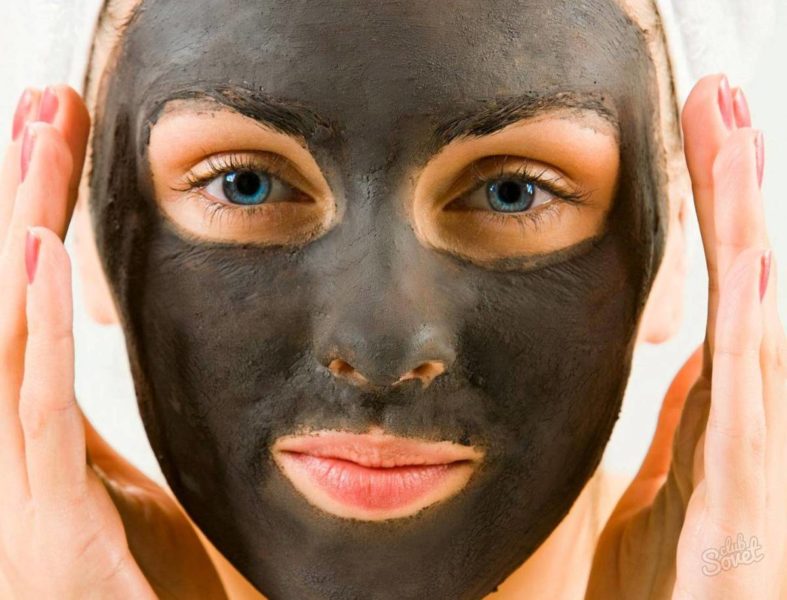
Activated carbon is made from natural ingredients (certain types of wood, coconut shell, coal), which explains its versatility and safety. The unique sorption properties made it indispensable in cosmetology.Particles of activated carbon attract everything that comes to hand - fat molecules, bacteria, dust ... And when removed from the skin, they carry this harmful load with them.
Due to the high sorption qualities of activated carbon, a mask based on it has the following actions:
- cleanses the skin of the face from comedones (black dots);
- makes easy polishing of areas with post-acne;
- reduces oily skin;
- relieves inflammation;
- cleanses pores and their narrowing.
Of course, it is good to supplement such a mask with other components, taking into account the type of skin and existing problems. But do not be too frivolous to use a home black mask. This is a fairly powerful tool that, if used improperly, can do more harm than good.
Therefore, pay attention to the following restrictions:
- apply the mask exclusively (!) on a cleaned and well-steamed face;
- do not use such a cosmetic product on dry skin (it can be applied exclusively to the nose and chin);
- do not use the composition in areas of inflamed epidermis;
- do not keep such a tool on the skin for too long - remove immediately as it starts to dry out;
- refuse to apply coal masks for rosacea and the presence of open wounds on the face.
If you apply a black mask to the damaged epidermis, it is possible that removing it, you will damage the next healthy areas.
Preparation of skin for mask application
You don’t have to perform any special procedures before applying a coal mask. All manipulations are traditional, but they must be done, otherwise it is pointless to wait for a positive effect.

- Be sure to remove makeup and dust with soap or cosmetic milk. If foreign particles remain on the skin, they will interfere with the mask.
- You can perform a light peeling to remove the upper coarse skin cells. Then the particles of coal can penetrate deeper, which means the effect will be brighter and last longer.
- Steam your skin in any convenient way. You can do this by simply holding your face over a bowl of hot water. But if you want to enhance the effect, prepare a decoction of pharmacy chamomile in advance or add your favorite essential oil to the water. If the pores of the epidermis are not well open, then the action of the mask will be superficial - you will not achieve deep cleansing.
The preparatory phase is certainly important. But no less important are the final procedures. The epidermis after such manipulations needs antiseptic processing and nutrition.
Therefore, removing the mask, be sure to do the following:
- wash yourself with a pre-prepared decoction with tea tree ether (or juniper, lemon, mint, pine);
- wipe the skin with ice cubes or just rinse with cold water;
- After some time, when the redness disappears, apply the usual nourishing cream to the face.
If everything is done correctly, the skin after such a mask will look younger, thinner and more tender. Black dots (comedones) will go away, the oily sheen will temporarily disappear.
For some time after removal of the composition, the face may remain reddened. Most likely, you either overexposed the product, or your skin is very sensitive. Be that as it may, it is harmless and will pass quickly.
Activated Carbon Cosmetic Mask Recipes
It is inconvenient and not very pleasant to apply powdered activated carbon in its pure form. Its particles are quite stiff and injure the epidermis. Therefore, in order to make a cosmetic product safe and pleasant to the skin, it is better to choose a base for it. Choose basic components based on your skin type and existing dermatological problems.
Activated Carbon with Gelatin
It is best to start exploring the charcoal mask with a gelatin-based compound. It lays on the face with a good dense film, softens the effect of coal and has a rather noticeable anti-aging and tightening effect due to natural collagen, which is found in excess in gelatin.After applying the product, the skin will cleanse, become more elastic, small facial wrinkles disappear.
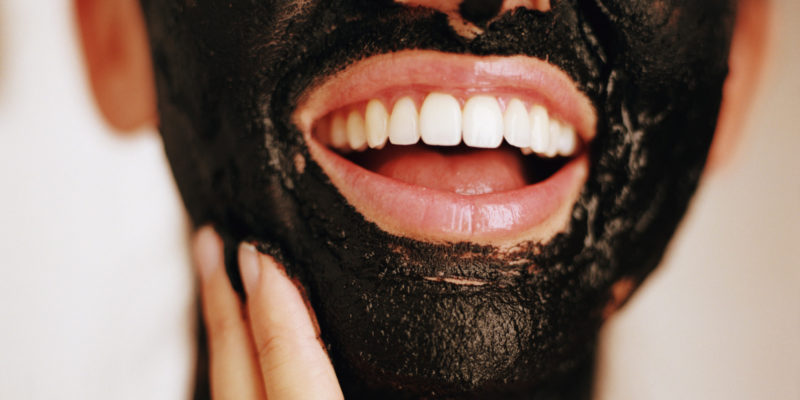
Prepare in advance:
- a tablespoon of heated water (if desired, replace with milk);
- a couple of coal tablets;
- a bag of gelatin.
Before you make a mask of activated carbon, make sure that all components are fresh. For tablets, take a look at the date of manufacture, and after opening a bag of gelatin, make sure that it is crumbly and does not have an unpleasant odor.
- First crush the charcoal between the spoons.
- Pour the powder into a small bowl and add water. Pour in the gelatin.
- Shuffle. It is not necessary to wait for the dissolution of coal and gelatin, so you can especially not be zealous.
- Send the bowl to the microwave (enough for 15 seconds) or heat the product in a bowl of hot water.
- Distribute the warm mask over your face with quick movements - the mass quickly freezes.
Use a regular brush to apply. Choose the one that is wider - too narrow will be inconvenient. Dip it in a warm composition and quickly distribute it on the skin, as if driving into pores. After finishing the first layer, immediately apply the second. The more layers you make, the easier it will be to remove the mask. Try so that the product does not fall on the eyebrows and the area above the upper lip - when removing the mask, hairs can break out.
Rinse off the composition is not necessary. The frozen mask is carefully removed with a “stocking”. This is the essence of the procedure - pollution and solidified fat, forming comedones, should stretch out of the pores, sticking to the mask. When gelatin is not enough or you hold the composition on your face for too long, it begins to be removed by scales. It is very uncomfortable and very painful. If this still happened, soak a towel in warm water and attach it to your face for 3 seconds. So the mask will slightly get wet and will be removed better.
Activated carbon with PVA glue
By the principle of action, such a mask from black dots with activated carbon is no different from the one described above. But you won’t have to wait for the rejuvenating and firming effect - in PVA there is still no collagen.
To prepare the product, you need a tablet of coal and a spoonful of water and glue. Prepare the coal powder, fill it with water and introduce PVA. Mix thoroughly, you do not need to warm the composition. Apply it in the same manner as above and remove when it dries. Flushing the product is also useless. You can remove some especially naughty flakes that remain on the skin after removing the mask with water.
Activated Carbon and Aloe
The properties of aloe are probably known to all women. The juice of this plant has a bactericidal effect, heals small wounds, relieves inflammation. As part of a coal mask, this component will be especially useful if you want to use it on sensitive skin.
Dilute the coal powder in a spoonful of water and add a few drops of aloe juice. It is better to prepare such a gelatine-based product, but some cleansing effect will be noticeable without it. Hold the composition on the skin for up to a quarter of an hour and rinse with warm clean water.
Activated Carbon with Honey
You can cook this mask by simply mixing the coal powder with warm honey. Such a tool will perfectly scrub the skin, and eliminate an unpleasant oily sheen. Honey, due to the presence of many trace elements in the composition, nourishes the skin and makes it softer and more tender.
If desired, honey can also be added to a gelatin-based mask. So you will achieve a deeper purification and nutrition. In the first case, the composition is simply washed off with water, in the second - traditionally, removed with a “stocking”.
Activated Carbon and Aspirin
It is not worth experimenting with such a mask on dry skin. This composition is suitable for owners of oily epidermis with wide pores. Aspirin cleanses the skin well and restores its healthy color.
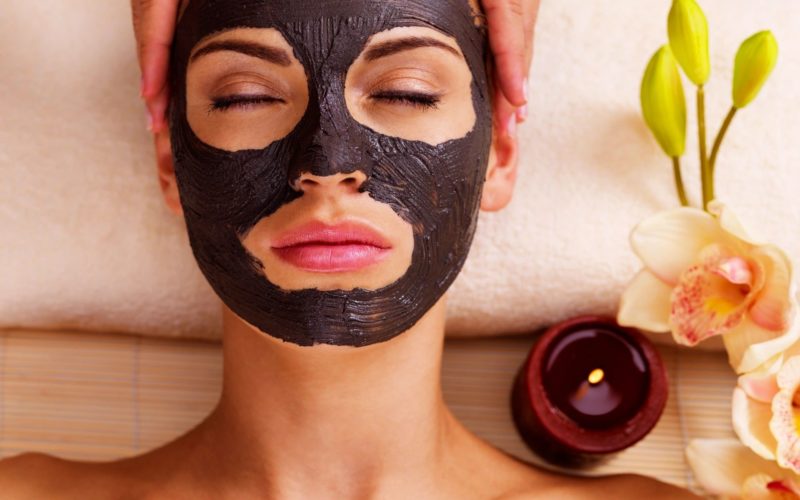
This mask is also best prepared on the basis of gelatin.Grind black and white tablets, pour the finished powder with a spoon of mineral water and add gelatin. Warm the composition and distribute it warm over the skin of the face.
Activated Carbon and Black Clay
Black clay itself is a sorbent, therefore, as a part of cosmetics with charcoal, it enhances its effect. Pores after applying this composition will deeply cleanse, the skin will look younger and fresher. The properties of black clay will help normalize the activity of sebaceous glands.
Mix the powder from the charcoal tablet with a tablespoon of dry clay. Dilute dry ingredients in water or milk. If you wish, you can add gelatin, honey, essential oils to the composition.
Apply the composition with a spatula and, while it dries (up to 20 minutes), lie down, trying not to talk. Rinse off the agent without waiting for its final solidification.
Blue clay with charcoal for oily skin
In general, any mask with charcoal is indicated for use on the epidermis of the oily type. This is explained by the sorption properties of the main component, due to which it draws toxins, dirt, bacteria and fat from the skin. To enhance the effect, blue clay can be added to the composition of the coal mask. It, among other things, will relieve inflammation and lighten reddened areas of the skin.
For convenience, you can simply add a tablespoon of dry clay to a classic charcoal gelatin mask. If it is not at hand, it is easy to prepare the product in plain water. Apply the finished composition and leave it on your face until the clay begins to harden (about 7-10 minutes). Then apply the next layer of clay and now let it dry. After that, rinse off the product with herbal decoction or warm water.
Charcoal anti-aging recipe
A noticeable anti-aging, firming and refreshing effect is exerted by a coal mask based on gelatin with the addition of ordinary table salt. Suitable and marine. Prepare the mass for application in the traditional way, then, in an already heated composition, pour a spoonful of salt and add 4 drops of tea tree ether and aloe juice.
You can leave such a composition on the skin for no longer than a quarter of an hour, and after removing it, it is important to wash your face well with water or chamomile tea to remove all the salt. Perform these cosmetic procedures should not be more often than once every 7-10 days.
Activated charcoal against inflammation
Charcoal powder is best applied to non-inflamed areas of the skin. But for prevention on inflammation-prone skin, charcoal-based products with the addition of essential oils can be used.

Dilute the crushed coal in 25 ml of rose water and add to the composition a couple of drops of essential oils of jasmine, pharmacy chamomile and fragrant rosemary. Keep the finished product in contact with the skin for up to 20 minutes.
Activated Carbon with Lemon
Lemon as part of any mask will have an antiseptic, drying and brightening effect. It is good to add a few drops of sour juice to homemade cosmetics for those who have a problem of post-acne or black spots on their faces.
Dilute the coal powder in a couple of tablespoons of pure (non-fruit) yogurt. Add 5-7 ml of lemon juice and mix. Apply to the face with a brush. After a quarter hour, rinse.
Acne Activated Carbon
This tricky recipe is suitable for problematic skin. But keep in mind that it is still undesirable to apply the product to damaged areas. For cooking, you need a tablet of coal and spirulina, as well as tea tree ether and chamomile broth. Spirulina perfectly heals wounds, chamomile soothes the skin, and tea tree has an antiseptic effect.
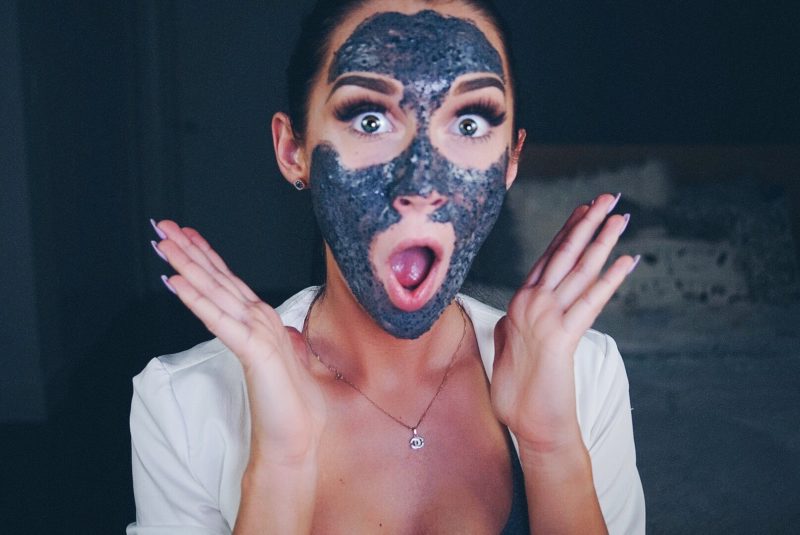
Crush the tablets into powder and dilute it in a warm broth. Add 5 drops of oil to these ingredients. Apply on pre-steamed face and hold for up to a quarter of an hour. Rinse with the remaining chamomile broth.
Activated Carbon with Egg
Such a composition can be carefully used on any skin as a deep peeling.In this case, it is better to remove the protein - it dries the epidermis, which is not necessary, given the presence of coal in the composition of the product. But the yolk rich in microelements will come in handy.
Mix the charcoal with the yolk, add milk or better sour cream. In the first case, the mixture will turn out to be more liquid and, for convenience, will require the introduction of, for example, clay. Distribute the resulting composition on the face, massage the skin well and leave the product on it for about 20 minutes. Then rinse off with a herbal decoction or just warm water.
There are many cosmetic preparations based on coal powder, and the result of their use will be noticeable the first time. Nevertheless, it is important to remember that the frequent conduct of such cosmetic procedures dehydrates the skin and deprives it of beneficial trace elements along with harmful ones. Therefore, do such masks even for oily skin no more than once every 7-10 days.





